Embeddings#
Word vectors, or word embeddings, are numerical representations of words in multidimensional space through matrices. The purpose of the word vector is to get a computer system to understand a word. Computers cannot understand text efficiently. They can, however, process numbers quickly and well. For this reason, it is important to convert a word into a number.
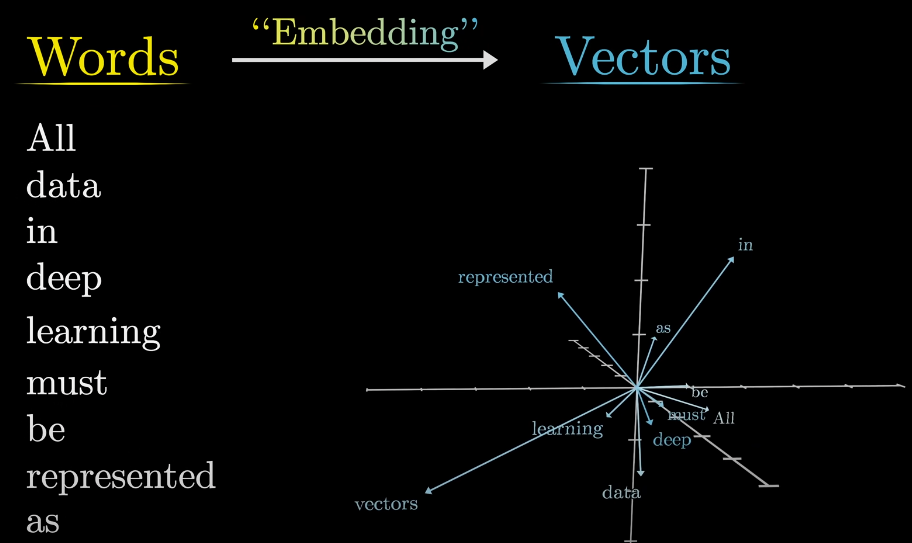
This code will load pre-trained word embeddings, reduce their dimensionality to 3 using PCA, and plot them in a 3D space using matplotlib.
import gensim.downloader as api
from sklearn.decomposition import PCA
import matplotlib.pyplot as plt
from mpl_toolkits.mplot3d import Axes3D
# Load pre-trained Word2Vec model
model = api.load("glove-wiki-gigaword-100") # or use "word2vec-google-news-300" or glove-wiki-gigaword-50
# List of words to visualize
words = ['king', 'queen', 'man', 'woman', 'paris', 'france', 'cat', 'cats']
# Get word vectors
word_vectors = [model[word] for word in words]
# Reduce dimensions to 3 using PCA
pca = PCA(n_components=3)
reduced_vectors = pca.fit_transform(word_vectors)
# Plotting
fig = plt.figure()
ax = fig.add_subplot(111, projection='3d')
for word, vec in zip(words, reduced_vectors):
ax.scatter(vec[0], vec[1], vec[2])
ax.text(vec[0], vec[1], vec[2], word)
ax.set_xlabel('PCA1')
ax.set_ylabel('PCA2')
ax.set_zlabel('PCA3')
plt.show()
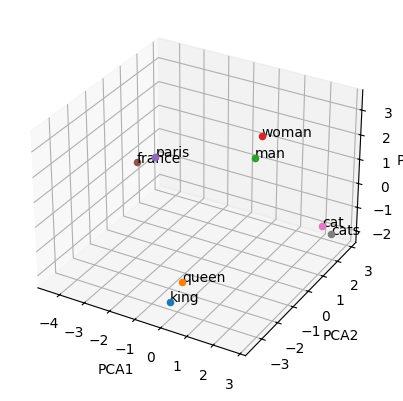
Plurals are in the same direction#
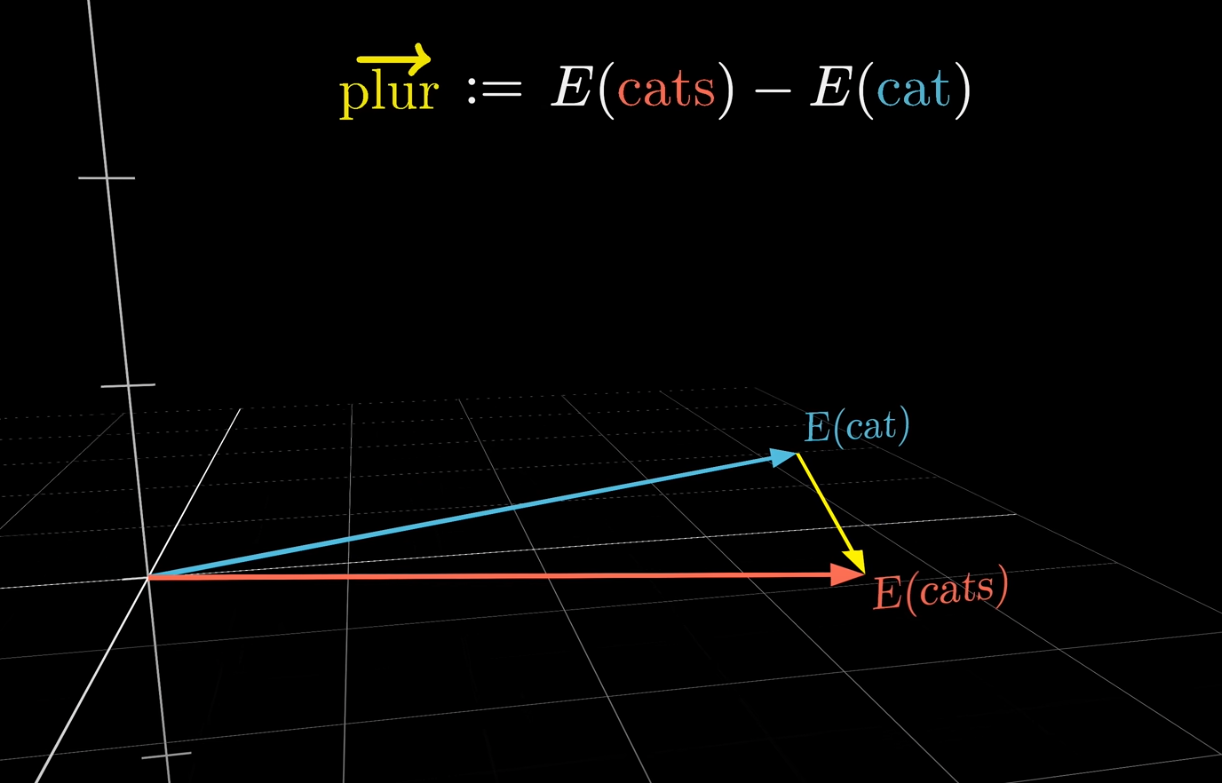
Words with relationship or similarity (same direction and closer to each other)#
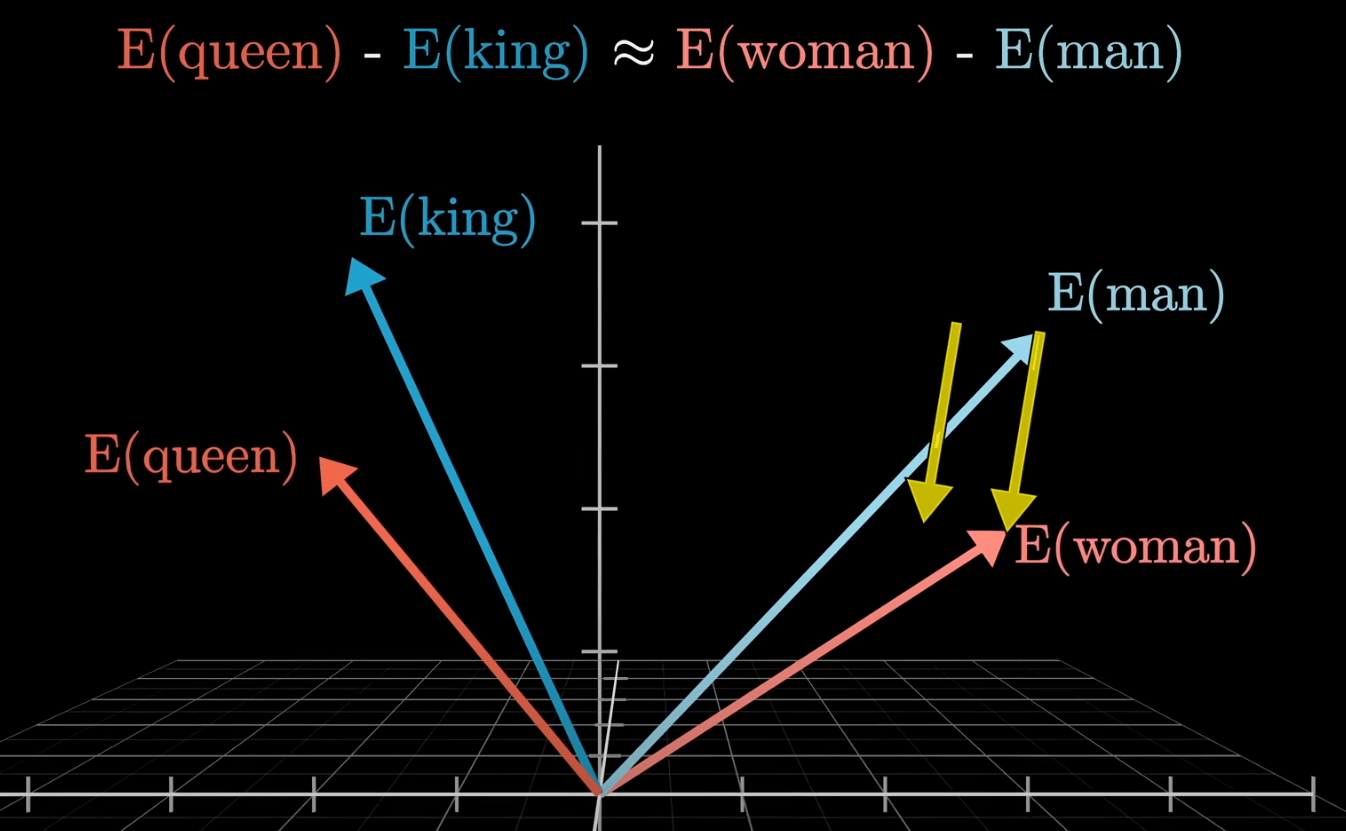
Dot products and Similarity#
Dot products of two vectors help to identify how well they align. Geometrically the dot product is \(+ve\) if the vector points in same direction (plurals, king-queen etc), \(0\) when they are perpendicular and \(-ve\) when they are opposite
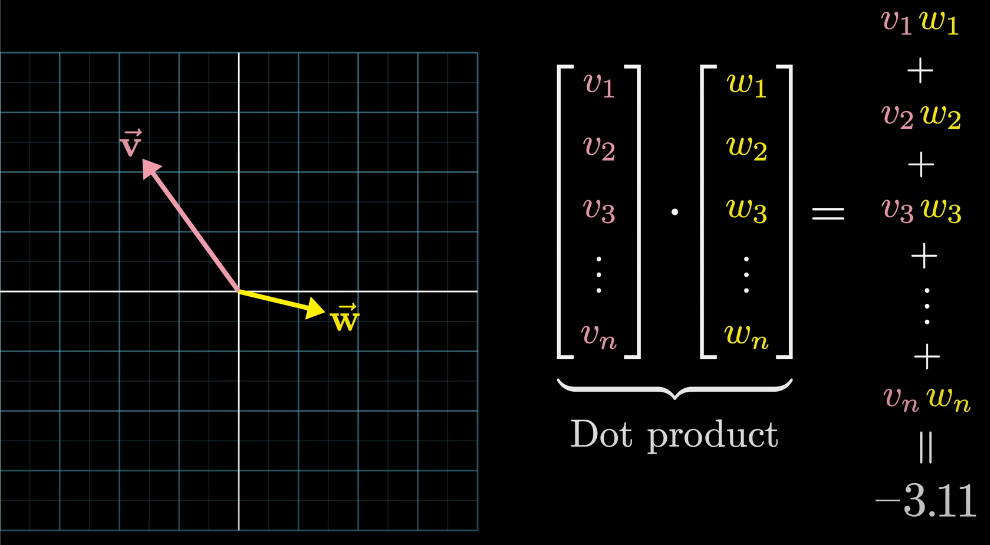
The highest weighted sum dot(c,c) is between vectors that are exactly identical. In contrast, because a and b have no overlapping weight, their dot product is zero. features in b and e seems opposite to each other.
import numpy as np
a = [ 0, 1, 0, 1]
b = [ 1, 0, 1, 0]
c = [ 0, 1, 1, 0]
d = [.5, 0,.5, 0]
e = [ 0, 1,-1, 0]
print(f"a.b = {np.dot(a,b)}")
print(f"b.c = {np.dot(b,c)}")
print(f"b.d = {np.dot(b,d)}")
print(f"c.c = {np.dot(c,c)}")
print(f"b.e = {np.dot(b,e)}")
a.b = 0
b.c = 1
b.d = 1.0
c.c = 2
b.e = -1
Cosine similarity#
Given two n-dimensional vectors of attributes, A and B, the cosine similarity, cos(θ), is represented using a dot product. The resulting similarity ranges from -1 meaning exactly opposite, to 1 meaning exactly the same, with 0 indicating orthogonality or decorrelation, while in-between values indicate intermediate similarity or dissimilarity.
Lets use a pre-trained Word to Vector model glove-wiki-gigaword-50 and find out similarities between various words using Cosine Similarity
import gensim.downloader as api
def cosine_similarity(vec_a, vec_b):
"""
Calculate the cosine similarity between two vectors.
Args:
- vec_a: A numpy array representing the first vector.
- vec_b: A numpy array representing the second vector.
Returns:
- Cosine similarity as a float.
"""
dot_product = np.dot(vec_a, vec_b)
norm_a = np.linalg.norm(vec_a)
norm_b = np.linalg.norm(vec_b)
return dot_product / (norm_a * norm_b)
# Load pre-trained Word2Vec model
model = api.load("glove-wiki-gigaword-50")
# List of words to visualize
words = ['king', 'queen', 'man', 'woman', 'paris', 'france', 'cat', 'cats', 'angry', 'happy']
# Get word vectors
word_vectors = [model[word] for word in words]
embeddings = dict(zip(words, word_vectors))
king_king = cosine_similarity(embeddings["king"], embeddings["king"])
king_queen = cosine_similarity(embeddings["king"], embeddings["queen"])
king_cat = cosine_similarity(embeddings["king"], embeddings["cat"])
king_man = cosine_similarity(embeddings["king"], embeddings["man"])
king_woman = cosine_similarity(embeddings["king"], embeddings["woman"])
king_paris = cosine_similarity(embeddings["king"], embeddings["paris"])
france_paris = cosine_similarity(embeddings["france"], embeddings["paris"])
cat_cats = cosine_similarity(embeddings["cat"], embeddings["cats"])
angry_happy = cosine_similarity(embeddings["angry"], embeddings["happy"])
print("King vector: ", embeddings["king"])
print(f"Cosine similarity between king_king: ", king_king)
print(f"Cosine similarity between king_queen: ", king_queen)
print(f"Cosine similarity between king_cat: ", king_cat)
print(f"Cosine similarity between king_man: ", king_man)
print(f"Cosine similarity between king_woman: ", king_woman)
print(f"Cosine similarity between king_paris: ", king_paris)
print(f"Cosine similarity between france_paris: ", france_paris)
print(f"Cosine similarity between cat_cats: ", cat_cats)
print(f"Cosine similarity between angry happy: ", angry_happy)
King vector: [ 0.50451 0.68607 -0.59517 -0.022801 0.60046 -0.13498 -0.08813
0.47377 -0.61798 -0.31012 -0.076666 1.493 -0.034189 -0.98173
0.68229 0.81722 -0.51874 -0.31503 -0.55809 0.66421 0.1961
-0.13495 -0.11476 -0.30344 0.41177 -2.223 -1.0756 -1.0783
-0.34354 0.33505 1.9927 -0.04234 -0.64319 0.71125 0.49159
0.16754 0.34344 -0.25663 -0.8523 0.1661 0.40102 1.1685
-1.0137 -0.21585 -0.15155 0.78321 -0.91241 -1.6106 -0.64426
-0.51042 ]
Cosine similarity between king_king: 1.0
Cosine similarity between king_queen: 0.7839044
Cosine similarity between king_cat: 0.38628823
Cosine similarity between king_man: 0.5309377
Cosine similarity between king_woman: 0.41133782
Cosine similarity between king_paris: 0.30651847
Cosine similarity between france_paris: 0.8025329
Cosine similarity between cat_cats: 0.78652704
Cosine similarity between angry happy: 0.5709519
